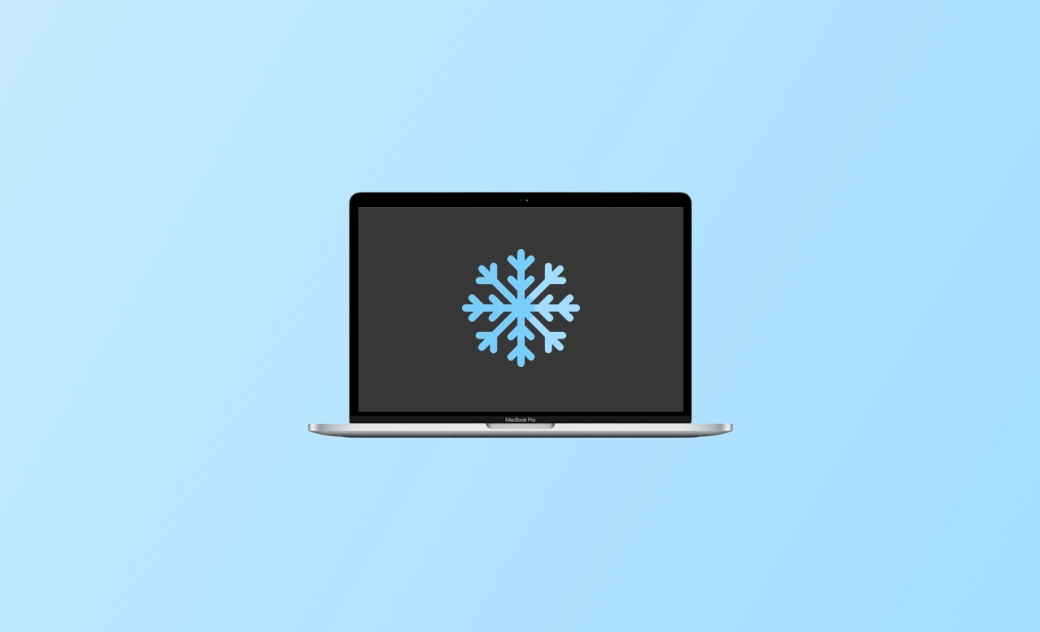Mac Freezing after Tahoe Update? Try These 5 Fixes
Is your MacBook frozen after the macOS Tahoe update? It may cause missed deadlines and even potential data loss.
So, how do you unfreeze a MacBook, and what should you do when it freezes?
In this post, we first explain why your MacBook may be frozen, then provide 5 practical ways to resolve the issue. Finally, we share some suggestions to prevent your MacBook from becoming unresponsive in the future.
Let's get started!
Why Is My Mac Freezing After Tahoe Update?
Before discussing how to unfreeze your MacBook, it's important to identify the reasons it may get stuck. This knowledge will help you address the issue effectively.
Your MacBook may freeze for the following reasons:
- Crashed applications
- Insufficient memory space
- Malware
- Viruses
- Outdated macOS system / macOS Tahoe bugs
- Too many startup items
How to Fix macOS Tahoe Freezing Issues
Now that you know the potential causes of a frozen MacBook, let's explore how to unfreeze it.
Here are 5 useful methods. Choose the one that fits your situation and start your unfreeze journey.
Force Quit Frozen Apps
An unresponsive app can cause your MacBook to freeze. If your MacBook suddenly becomes unresponsive, try force-quitting the app. This can be done in two ways: via the Apple Menu or using the keyboard shortcut Command+Option+Esc.
Force Quit via the Apple Menu
- Click the Apple icon on the top menu bar.
- Select Force Quit.
- Select the app causing the freeze and click it.
- Click Force Quit.
Force Quit via Shortcut
- Press Command+Option/Alt+Esc simultaneously.
- Select the app causing the freeze.
- Click Force Quit.
You can also try exiting the application if the mouse is still responsive:
- Move the cursor to the application name in the top menu bar.
- Click it.
- Press Command+Q simultaneously or select Quit from the drop-down menu.
If your MacBook displays a spinning wheel, learn more in 6 Easy Ways to Stop the Spinning Wheel on Your Mac.
Uninstall Crashed Apps
Persistent app crashes can also cause your MacBook to freeze. Removing the problematic application is often the key.
BuhoCleaner is a recommended tool for Mac users. It can uninstall apps completely with one click and leave no trace. After removal, you can choose to reinstall the app if needed.
You can also use BuhoCleaner’s additional cleaning features to prevent macOS Tahoe from freezing.
How to uninstall an unresponsive or frozen app using BuhoCleaner:
- Free download, install, and launch BuhoCleaner.
- Click App Uninstall in the left menu.
- Select the app causing the freeze.
- Click Remove, wait for the process to complete, then click Done.
Disable Unwanted Login Items
Too many startup items can also cause your MacBook to freeze, especially on older machines. Disable unnecessary startup items via Apple menu > System Settings > General > Login Items.
BuhoCleaner can help you review startup items and remove unimportant apps to speed up your MacBook.
Follow these steps:
- Free download, install, and launch BuhoCleaner.
- Click Startup Items.
- Click Scan.
- Uncheck unimportant startup items.
Free Up Memory Space
Low memory can cause your MacBook to reboot or freeze. Use Activity Monitor to check memory usage and close unnecessary programs.
For an easier approach, use BuhoCleaner to free RAM, analyze disk space, and clean up junk, large, and duplicate files.
Shut Down Your Frozen MacBook
If force-quit or input devices don't work, press and hold the power button to restart:
- Press and hold Power until the screen turns off.
- Press Power again to restart.
- If it doesn’t work, disconnect peripherals and force reboot, or unplug and reconnect the power cord.
How to Prevent Your MacBook from Freezing Again
To avoid future freezes:
- Clear cache regularly.
- Empty the Trash.
- Review and remove unnecessary startup items.
- Use BuhoCleaner to remove duplicate and temporary files.
- Monitor disk space regularly.
Final Words
This article explains how to force quit, shut down, and use third-party software to unfreeze your MacBook. We also provide tips to help prevent macOS Tahoe freezing.
An effective Mac cleaner and app uninstaller can make this easier. Download one and start keeping your MacBook clean and responsive!
Wendy is a tech enthusiast with a deep passion for all things iPhone, iPad, and Mac. Wendy is always on the lookout for Apple products and is committed to providing Apple users with some of the latest information and useful tips.
